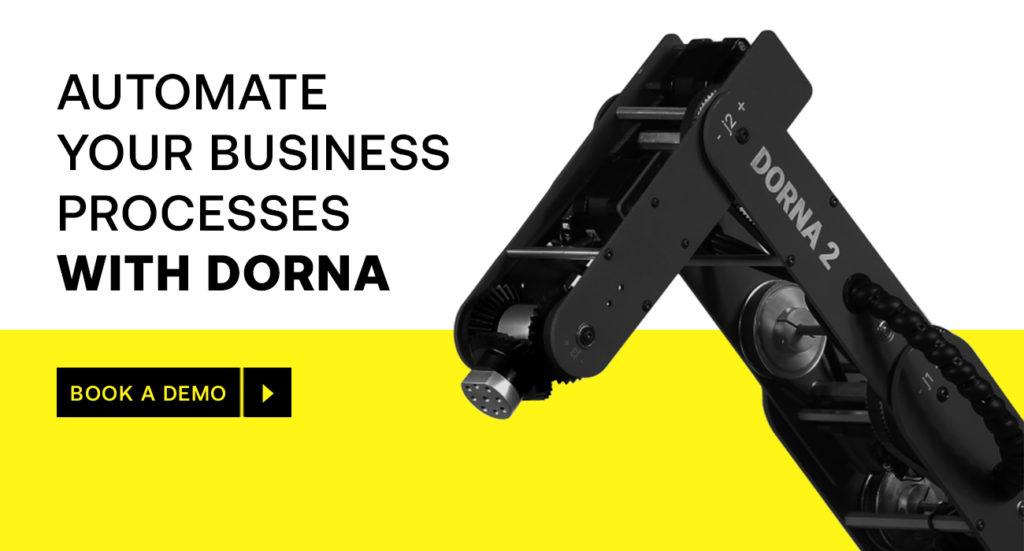Blogs
What is a 5-Axis Robotic Arm?
This blog explores the intricacies of 5-axis robotic arms, tracing the profound impact they have on reshaping the landscape of…
29 minute read
In This Article
In the bustling industrial landscape, robotic arms have risen as unsung champions, their full potential still awaiting widespread recognition. Today, they are reshaping the landscape of material handling, becoming invaluable assets for businesses aiming to optimize their operations.
These versatile machines offer an array of benefits, including improved efficiency, precision, cost-effectiveness, and enhanced safety. If you’re considering the adoption of robotic automation, you’ll be delighted to find that numerous material-handling tasks can be automated with efficiency.
In this article, we will discuss six tasks that can be seamlessly enhanced using robotic arms.
Robotic arms can be programmed to pick items from one location and delicately place them in another, a task common in industries like electronics, food processing, and pharmaceuticals. The robots’ ability to handle fragile or delicate items with care is particularly beneficial in these applications.
Robotic arms are the artisans of the assembly line. They can skillfully piece together complex products, ensuring that each component is fitted with precision. This is particularly beneficial for industries like automotive and electronics, where precision assembly is paramount for the quality of the final product.
Manufacturing processes often involve machines that require regular loading and unloading. Robotic arms can handle this repetitive and sometimes risky task with precision and speed. Moreover, they can operate around the clock, elevating overall productivity.

Robotic arms can be equipped with various sensors and instruments to perform thorough product testing. They can quickly and consistently inspect products for defects, guaranteeing that only high-quality items make their way to the market.
For industries that require precision cutting of materials, robotic arms offer unparalleled accuracy. These machines can effortlessly and consistently cut materials of various sizes and shapes, revolutionizing industries such as textiles and packaging.
Robotic arms, with a blend of finesse and precision, excel at the rapid and accurate labeling of products. Their proficiency ensures consistent, professional labeling, making them indispensable in industries like food packaging and pharmaceuticals.

The use of robotic arms for automating material handling tasks offers several key advantages:
Robotic arms can work tirelessly around the clock, ensuring tasks are completed consistently and without interruptions.
Robots perform tasks with pinpoint accuracy, reducing the likelihood of errors in sorting, placement, or stacking.
Automation minimizes the risk of workplace injuries, especially when handling heavy or hazardous materials.
These robots can be programmed to handle a wide range of tasks, making them suitable for various industries and applications.
While the initial investment in robotic arms can be substantial, long-term cost savings in labor and increased productivity often outweigh these costs.
Conclusion
Automating material handling tasks with robotic arms is a strategic and forward-thinking move for businesses seeking to elevate efficiency, precision, and safety in their daily operations.
As technology continues to advance at a rapid pace, the integration of robotic arms in material handling processes will undoubtedly become more prevalent. This is because the ongoing transformation is unprecedentedly pushing the industry toward a future marked by innovation and heightened productivity.
Automate your material handling tasks with Dorna.
Blogs
This blog explores the intricacies of 5-axis robotic arms, tracing the profound impact they have on reshaping the landscape of…
29 minute read
Blogs, News, Products
Dorna Robotics, a company based in California, is excited to announce the addition of a new robot to its existing…
8 minute read
Blogs
End-of-arm tooling (EOAT) is a cornerstone of the automation revolution. It serves as the vital link between robots and their…
34 minute read
Blogs
This blog explores different gripper types, their features, applications, and how they improve production efficiency.
32 minute read